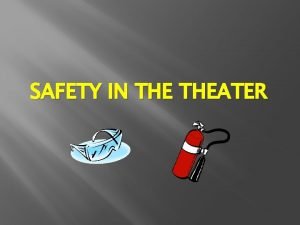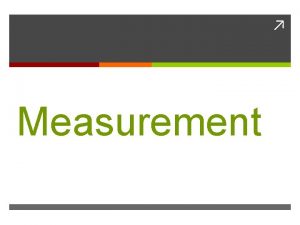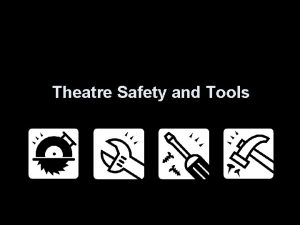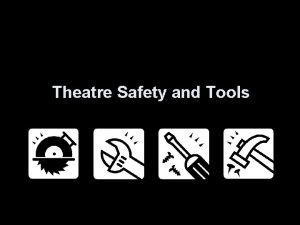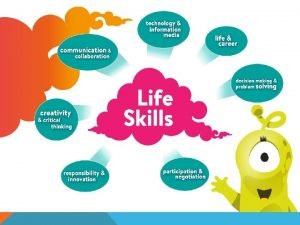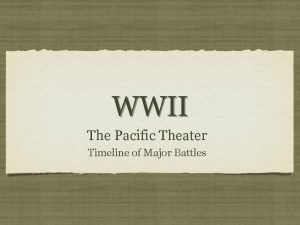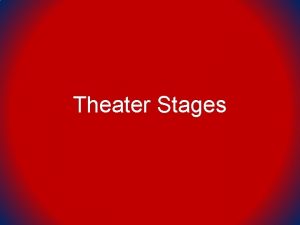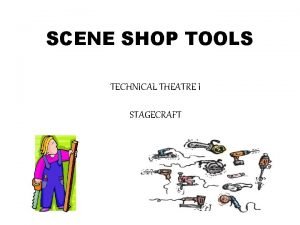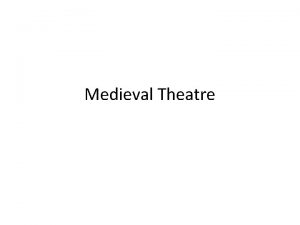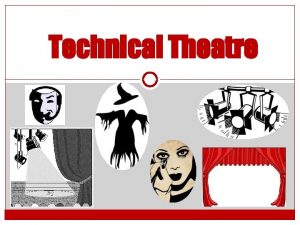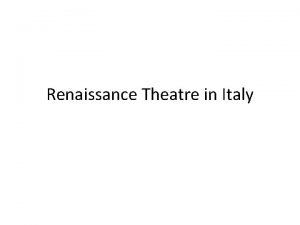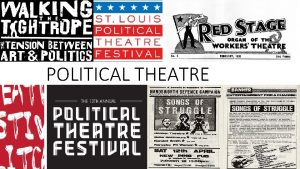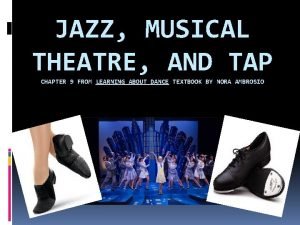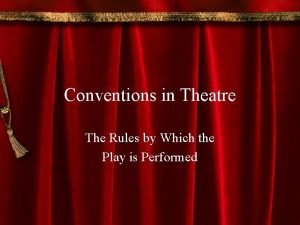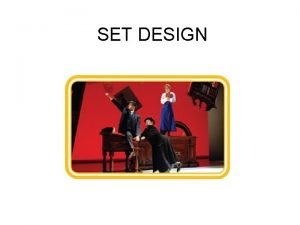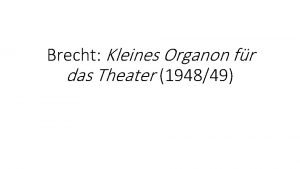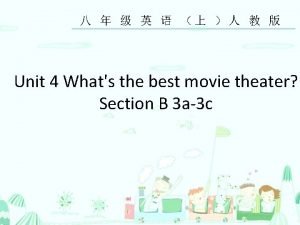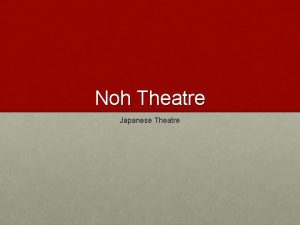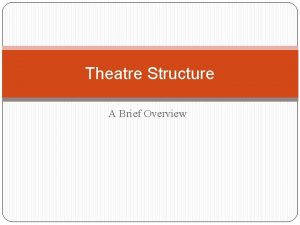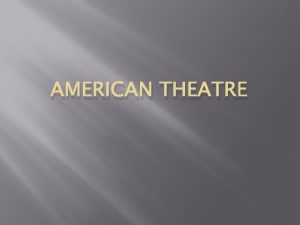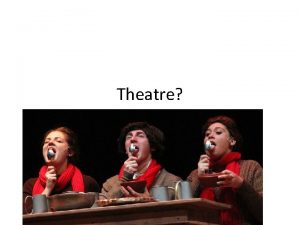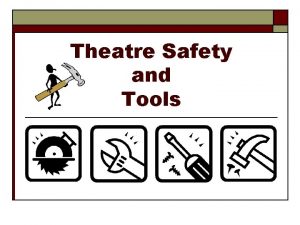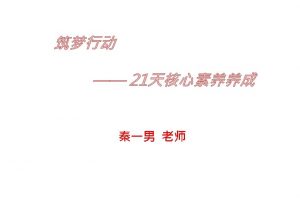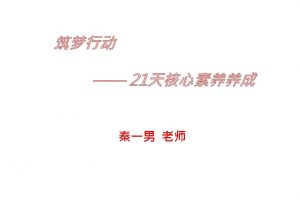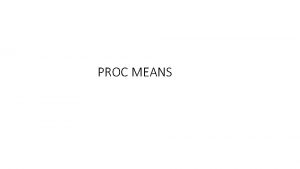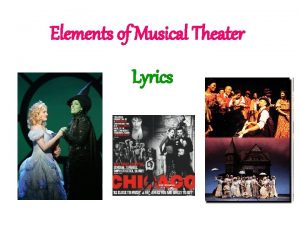SAFETY IN THEATER Theatre Safety in theatre means






































































- Slides: 70

SAFETY IN THEATER

Theatre Safety in theatre means safe- guarding crews, casts, and audiences from all foreseeable hazards and emergencies. Learning to work safely is a vital aspect of educational theatre. Most accidents can be avoided by replacing unsafe habits with safe practices. v

MAIN CAUSES OF ACCIDENTS v v v v Insufficient knowledge Improper use of tools and facilities Failure to safeguard hazardous equipment Failure to remove faulty equipment Carelessness Taking unnecessary risks Being in a hurry

Strike v The most dangerous time of a production is the strike, when the show is over and the technical elements are dismantled and stored. This time of exhilaration and exhaustion warrants a greater degree of attention and vigilance than any other period in the course of the production.

General Safety Regulations v v Running practical jokes, throwing tools or materials, jumping from one level to another, or any other dangerous activity is not permitted. The proper method of bending the knees, keeping the body erect, and pushing upward with the legs should be used when lifting objects. Assistance should be obtained when lifting or carrying heavy objects.

General Safety Regulations continued v v The shop, stage-house, or other work area must be cleaned and left in a safe condition. All tools should be returned, floors cleaned (using a vacuum or wet mop rather than dusting and sweeping) trash emptied, and walkways and exits left clear and unobstructed. In short, any potential safety or fire hazard must be eliminated. Open traps and usable platforms or steps units must be barricaded (fenced or roped off) or covered. They should be marked with large signs at all times between work periods or performances.

General Safety Regulations continued v Cleanliness and order in the storage areas should be maintained at all times. v Any accident should be reported immediately to the supervising teacher so that first aid and/or medical attention can be administered without delay.

Clothing and Personal Protective Equipment v v � Hard sole shoes should be worn while working in the scene shop. Tennis shoes are not desirable; sandals and bare feet should not be permitted. Loose fitting clothing, scarves, ties, or jewelry should not be worn while using power equipment. Long hair should be tied back or covered. Long Sleeve shirts should be either buttoned at the cuffs or rolled to the upper arm. Never wear the following item(s) when working on or backstage. Loose fitting clothing , Jewelry, Sandals

Clothing and Personal Protective Equipment continued… v Goggles, face shields, or safety glasses – all rated for impact- should be worn while using power tools and equipment. v Ear muffs should be worn during prolonged exposure to excessive noise. v Gloves should be worn to protect against abrasion and solvents. v Hard hats should be worn while scenery or lighting equipment is being rigged.

Clothing and Personal Protective Equipment continued… v v � Wear special work clothes which can be removed after work. Wash clothes frequently and separately from regular clothing. Wash hands in soap and water during breaks, before eating, and after work. Never use solvents to clean hands. Long hair can be a very serious problem in theater if you are working with a power tools.

FIRE PROTECTION v v v Theatrical fires can be divided into three categories: Class A – Fire involving ordinary combustibles such as paper, cloth, cardboard, and wood. Class B – Fire involving petroleum base products such as paint, oil, grease, and fuel. Class C – Electrical fire. Proper procedures for evacuation should be discussed and rehearsed. Exits and access to exits must be kept clean and obstructed at all times. During periods of occupancy, no exit door should be locked, chained, or obstructed by any means. The door must be readily Besides being dangerous, a blocked fire exit could lead to The theater being shut down during an impromptu inspection by the local Fire Department Many theaters have a Fire Curtain that can close off the performing area from the auditorium in case of a fire on stage opened from the inside.

FIRE PROTECTION continued… � � v v v Every theater should have working, regularly tested fire extinguishers available in key areas. These extinguishers should be ABC Rated Fire extinguishers must be well maintained and unobstructed at all times. Students should be trained in their use. Flammables such as paint, thinner, and spray cans should be stored in special metal storage cabinets. All rags or clothing materials saturated with flammable paints or solvents should be properly discarded outside of the building. Open flames on stage should be avoided if possible. Adequate enclosure and safeguards must be provided if open flames are used. Electric light bulbs must not be covered or decorated with paper or other combustible material.

FIRE PROTECTION cont… If a fire is discovered at an early stage, the procedure is: -sound the alarm -fight the fire, if it is safe to do so v People tend to judge a fire to be small, fight it without sounding an alarm, realize they can’t control it, and then sound the alarm, which only increases the chances of allowing a small fire to become a large one. v If there is any doubt about whether a small fire can be extinguished without personal risk, or when a fire is obviously out of control, the procedure is: -evacuate everyone immediately -sound an alarm on the way out v

LADDERS v v Before any ladder or scaffolding is used, it should be inspected to assure that it is in safe condition. A chair or box should never be substituted for a small ladder. Wood ladders should not be painted in as much as paint hides splits and defects (shellac or varnish are acceptable alternatives). Nonskid safety feet should be installed on any straight ladder before it is placed in service. Guardrails should be used on scaffolding. Distance away from the wall or surface against which it leans is approximately one quarter the length of the ladder.

LADDERS cont… v v Straight ladders should be tied off, blocked, or otherwise secured when in use. An assistant should support the ladder against accidental slipping or sliding. A step ladder should always be completely opened and climbed only on the side with the steps. Never stand or work from the top of a step ladder. Tools or other objects should be secured against falling while work is being performed from a ladder. Such items should never be left on a ladder, dropped, or pitched to another worker. After use, ladders should be returned to proper storage.

Tools and Machinery v v v Keep the work area free of clutter. Know the location of the master electrical switch in the scene shop. Before operating machinery or power tools for the first time, be checked out on properation procedures by the supervising teacher. Dress properly. Wear hard sole shoes, avoid loose clothing, and cover or tie long hair that could catch in moving parts or air vents. Use safety eye to face protection. Wear safety glasses with side shields, impact goggles, full face shields, or masks/respirators as indicated by the nature of the work being performed.

Tools and Machinery cont… v v Do not use any defective or questionable electrical tool, machine, cord, connection, or accessory. Report any defects for repair or replacement immediately. Understand the application, limitations, and potential hazards of any tool or machine you use. Select the proper tool for the job to be done. Don’t improvise. Use only recommended accessories. Keep guards in place and in working order.

Tools and Machinery cont… v v Make sure saw blades, drill bits, etc. , are sharp, clean, and regularly maintained. The blade in the table saw should be recessed when not in use. Finger and hands must be kept clean of the blade at all times. Do not use a tool with a frayed cord or broken connection. Use only heavy duty US –listed extension cords of proper wire size and length. Electrical lines running along the stage floor should be taped or otherwise secured to prevent ripping during work periods, rehearsals, and performances.

Tools and Machinery cont… v v v Use clamps or a vise to hold work in place when practical, freeing both hands to operate the tool. Avoid accidental startup. Make sure the switch is “off” before plugging in the cord or when power is interrupted. Never carry a power tool with your finger on the switch. Ground power tools. If a tool is equipped with a three-prong plug, it should be plugged into a three-hole electrical outlet.

Tools and Machinery cont… v Remove adjusting keys and wrenches before turning on a tool or machine. v Do not force tools. v Do not over reach. Maintain proper footing, balance, and a secure grip on the tool you are using. v Never adjust or change bits, blades, or belts with the power tool or machine connected to an electrical outlet.

Tools and Machinery cont… v Never brush away chips or saw dust while tools or machinery are operating. v Never leave tools or equipment running unattended. Disconnect equipment from the power source when not in use. v Never surprise, touch, or talk to anyone operating a power tool or machinery. Return tools to the tool room immediately after completing work. v

Rigging v v Only authorized and trained personnel are permitted to work with the rigging equipment and to enter the grid area above the stage. Safety procedures should be explained to the entire crew at the beginning of each work period involving rigging. Work should be arranged so that all rigging and flying are done together, with no other work taking place on stage. When a scenic piece is coming in, or when an arbor is being loaded or unloaded, there should be complete silence on stage.

Rigging cont… v v v The technical director or crew head should be the only person to call instructions to the grid crew. The director should inform both the grid and stage crew before a batten or piece is pulled in or out. The correct call to warn of a batten, scenery, or line coming in under control is, “heads up!” The emergency call for falling objects is, “clear the stage!” Pockets should be emptied before going on to the grid. Tools brought onto the grid must be tied or secured to the worker. Safety belts should be worn while working on the grid. Tools or hardware must never be left loose on the grid. Ropes or electrical lines must never be dropped to the stage floor from the grid. They should be pulled up, coiled, and carried down.

Rigging cont… v Any discovered irregularity in cable, rope, or the counterweight system should be reported immediately to the supervising teacher. v Counterweights not in use on the stage floor or landing platform should be neatly arranged. v Except for actual moment of flying, every counterweight set should be kept locked off with the locking rings in place. v Pipe extensions to battens must be securely taped, lashed, or wedged into the batten. There should always be at least three feet of pipe extension inside the batten.

Rigging cont… v When rigging pipes, battens, and other fling pieces with a rope, secure the piece with a clove hitch finished with a half hitch and tape. v Stage house rigging must be checked and approved by the faculty supervisor before use. v When not in use, every batten should be stripped of hardware, extensions, hemp, or other attachments.

Lighting v v Only authorized and trained personnel are permitted to work with lighting circuitry, dimmers, and instruments. Know the location of the master electrical switch for the stage lighting equipment. Do not work around electrical equipment without shoes on. Any electrical or mechanical defect or irregularity must be reported to the supervising teacher for correction. No repair of faulty equipment or instruments should be undertaken unless the supervisor has been consulted and approved corrective repair or maintenance.

Lighting cont… v v Even when disconnected, some electrical equipment can cause shock. Never remove the cover of a device without assessing the potential danger. Should an electrical shock occur, the source of power must be shut off immediately and artificial respiration applied if the victim’s breathing has been interrupted and stopped. Any incidence of electrical shock, no matter how slight, must be reported for immediate correction to the supervising teacher. Food and beverages should not be allowed in the light control area.

Paint v v v Be aware of potentially toxic materials: powered pigments and dyes, fireproofing chemicals, spray adhesives and glues, solvents, and paint. Compare labels and use products that contain the least toxic ingredients. For example, replace turpentine with mineral spirits. Use premixed paints rather than dry pigments. Use water-based or latex paints rather than oilbased paints and enamels. Use products that are in solution rather than in powered form

Paint cont… v v Avoid aerosol cans and spray products. Choose brushing and dipping methods in applying paint over spray methods whenever possible. Avoid breathing vapors, and use proper ventilation when painting. General dilution ventilation can be used with acrylic, latex, and artist’s oils. Spray painting requires exhaust ventilation. Avoid skin contact with pigments, paints, and solvents. If contact occurs, wash with waterless hand cleaners and/or soap and water. Never use solvents to clean hands.

Paint cont… v v Dispose of solvents and paint-soaked rags in approved self-closing waste disposal cans. Store quantities of solvents greater that one quart in approved safety containers. Do not pour solvents down the sink. Keep containers of paint, pigments, and solvents closed to prevent the escape of dust or vapors. Label all containers as to contents and hazards. Use non breakable containers stored on low, easy-to-reach shelves with the label-side to the front.

Silk Screen Printing v v v Exhaust ventilation should be used to remove vapors. Substitute mineral spirits for lacquer thinner whenever possible. Use rubber gloves for clean-up, and place solvent-soaked rags in a covered metal receptacle.

Make-up v Never lend or accept make-up from anyone. v Wash hands before and after applying makeup. Makeup artists should wash their hands before starting on another actor. Sponges and brushes should be washed after use on each individual. v Avoid aerosol products whenever possible. v Replace old make-up regularly

Make-up cont… v Avoid creating clouds of face powder that can be inhaled. Do not use old face powder. v Moisten brushes or pencils with clean tap water, not with saliva. v When removing spirit gum or latex, avoid prolonged skin contact with solvents. Replace lost skin oils with moisturizer.

Theatre Safety � � � Safety in theatre means that crews, casts and audiences are kept safe from all possible hazards and emergencies. Learning to work safely in theatre is very important. Most accidents can be avoided by replacing unsafe habits with safe practices.

Main Causes of Accidents Not knowing what should be done � Not using tools properly � Using bad or faulty equipment � Carelessness � Taking unnecessary risks � Being in a hurry �

The Danger Zone The most dangerous time of theatre production is the strike – when the show’s performances are over and its technical elements are dismantled and stored. This is when the crew is tired but excited, so mistakes are often made.

General Safety Regulations � � � No running, joking around or any other type of “horseplay” is allowed Lift heavy objects properly Always leave the shop and other work area clean Leave storage areas organized and neat Accidents should be reported immediately

Clothing Guidelines � � � � Always wear hard soled/closed toe shoes No loose fitting clothes around power equipment Long hair should be tied back Wear goggles/face shields or safety glasses while using power equipment Wear muffs/plugs if you’re around loud noise for a long time Wear gloves to protect against cuts and solvents Be sure to wash hands with soap before eating and after work

Stage Safety Terms used when working on the stage: � “Heads up!” – something above your head is moving or falling � “Clear!” – move out of the way of danger; falling objects

Measuring Tools � Used to measure dimensions and angles Tape Measure—used to measure long distances and layout dimensions on a stage floor Tri-Square—used as a guide to mark right angles across narrow materials

Hammering Tools � Used for nailing and starting screws Claw Hammer—designed for inserting and removing nails. Has two sharply curved claws for nail removal

Cutting Tools � Used to cut materials, such as wood, metal and plastic Hand saw—hand held saw (no power) used to cut wood Utility Knife—used to trim or for light-duty cutting and carving

More Cutting Tools � Used to cut materials, such as wood, metal and plastic Circular Saw—portable power saw used to cut wood in a straight line Jigsaw—(aka Saber Saw) portable power saw used for cutting curved lines in wood

Clamping Tools � Designed to firmly hold wood, metal or plastic Crescent Wrench— adjustable end to fit almost any size bolt or nut, most suitable for stage work C-Clamp—comes in different sizes, used to hold work or objects together

Clamping Tools � Designed to firmly hold wood, metal or plastic Pliers—used for gripping, clamping and bending Needle-nose Pliers—used for holding small objects in hard to reach places Diagonal Cutter—used for cutting soft wires

Fastening Tools � Used to connect or hold objects together with other hardware Drill—hand held power tool used for drilling or screwing together wood or light weight metals

More Fastening Tools � Used to connect or hold objects together with other hardware Phillips Screwdriver—used for inserting and removing screws, has a four-flanged tip that matches the crossed slots on a Phillips -head screw Flat-head Screwdriver—used for inserting and removing screws, has a flat tip used that matches slot-head screws

More Fastening Tools � Used to connect or hold objects together with other hardware Staple Gun—spring powered hand tool used for attaching light weight material to wood with staples Hot Glue Gun—heats sticks of adhesive to form a glue bond, used an a variety of materials

Safety Tools � Worn as a safety precaution to protect the body Goggles—worn to protect the eyes when using tool, should be worn when cutting wood and metal Gloves—worn to protect hands from wear, burns and blisters

Safety

General Theatre Safety Overall rules of working safely in a theatre. Theatres Are Dangerous Theatres are inherently dangerous places. We work with tools and equipment which if not used properly can cause severe damage to a person. We work with saws, paints, chemicals, electricity, explosives, and other items which, even with proper use, create potentially dangerous situations. We work on ladders, on catwalks, often at substantial heights. We move very heavy objects. And we do all of this in a limited space with frequently many people around, all of whom could be the victim of a moment of daydreaming or thoughtlessness.

Think, Think The most important rule of theatre safety is to always think about not only what you are doing at the moment, but to also think about what could happen, but also what could go wrong. Look around you as you move objects, or as you begin to saw or use other, potentially dangerous items.

Ask for Help Many of you will be working with tools and equipment you have never worked with before. It is absolutely vital you ask for help with anything you are unsure of. If you don't know how to do something, ask the teacher. If you are uncomfortable doing something, please let the person in charge know. Most accidents happen when a person is attempting something they really don't know how to do, or they are so nervous they don't have a real sense of control over what they are doing.

Use Safety Guards All of the power equipment have safety guards. Although at times the guards seem to be an annoyance, they are there for a very real purpose--to protect you and those around you. Unless directed otherwise by a person in charge, always leave the guards in place and use them properly. Also, be sure to use such aids as a push sticks or clamps when having to cut very close to the blade.

Use Personal Protection Be sure to wear personal protection devices when needed. Wear the breathing protection when working with anything creating small dust particles or vapors, such as spray painting. Wear hearing protection when working with some of the louder tools, especially the router and the planer. Wear vision protection when working with any tools creating flying pieces, which includes most of the tools. Given the amount of dust in the scene shop, I recommend you wear eye protection whenever you are working in theatre.

Scene Shop Safety Proper Attire 1. No loose, long or baggy clothing. It can get caught in moving parts and machinery or snagged on splinters etc. 2. Wear shoes with good, non slippery soles that cover the whole foot; no sandals or dress shoes. 3. No gloves while using power tools. (Again, these can get caught in moving parts of machines. ) 4. No shorts or skirts (jeans are best).

5. No long or large jewelry. It can get caught on things and may get ruined. 6. Wear clothes that will protect you from dust, etc. 7. You will get dirty and stained. Bring work clothes. (There are dressing rooms available. ) 8. Long hair must be put up or tied back and put down your shirt. A cap is a good way to keep your hair up also.

Safety Rules General Safety Rules: The most obvious safety rule is to be careful. Pay attention to what you are doing and do not rush. Repetitious jobs are more likely to cause inattention. Try to avoid monotony and boredom. Being careful means being careful all the time. You can be careful for years and then get hurt in two seconds of inattention. This is entirely under your own control. Being careful is your best defense against injury. Avoid danger by using common sense. Do not hurry and cut corners on safety. Some people take greater risks because they have a strange notion of invulnerability, or as a show of bravado. This will gain no respect for you in our shop.

Power Tools: Each power tool has its own set of safety rules. They are safe when properly used, but they can cause serious accidents when misused. You will be trained on each power tool before you use it. In general, power tools have rotating parts that can wind you in like a fishing reel if they catch on clothes, hair, or jewelry. Power tools can throw debris at you, so eye or face protection is necessary. Ear protection from loud noise is also often necessary. Make sure the work surface and floors are clear, and get EVERYTHING ready before you hit the ON switch. Students may NEVER operate unguarded power tools.

Hands: Hands are most susceptible to injury. Watch the cutting edge of any tool, especially the power tools, and be aware of where your hands are in relation to it. Pay attention and do not get distracted. There is a dangerous temptation to hold parts together with one hand while shooting pneumatic tools with the other. Sometimes staples and nails turn inside the wood and poke out where you do not expect them. This would seem elementary, but the number of bad cuts from matte knives is incredible. Chisels fall into this category also. The simple rule is to keep both hands behind the direction in which the sharp edge is going and never pull a blade towards your body.

House Keeping (A Clean Shop Is a Safe Shop) • Clean up your work area at the end of your work shift. • Do not leave tools and supplies out unnecessarily. • Do not let your work area become too cluttered, this can lead to trip hazards. Clean as you go. • Flatten nails in used lumber.

• Do not leave long sticks in trash barrels. They can poke others in the eyes. • Do not block fire extinguishers, doors, or marked tool-safety areas. • Keep pathways to fire exits and for crossing the shop clear. It can be dangerous having to carry large items while walking over lumber and trash.

Ladders: Working on ladders and scaffolds presents a potential for a fall. If you must use a ladder, always have someone there to foot and hold the bottom for you. Do not stand on the top or any steps the safety labels indicate. Before you get on a ladder, make sure that all four legs are firmly on the floor. Remember not to leave tools and hardware or anything heavy on top of a ladder. This will lead to the next person who moves the ladder getting hit in the head by a falling object. When you are working above on a ladder you must take extra precautions. You need to be aware of overhead scenery and lighting instruments and the electrical cable. Do not have loose items in pockets that may fall and whenever possible, tools should be attached to you. If you can't attach tools, extra precautions must be made to keep people below aware of you and your work.

Working with the fly system and ropes. When you are the person responsible for raising and lowering scenery or equipment it is your responsibility to make sure that people are out of the way, that all hazards are cleared and that everyone on stage knows that you are about to move something in or out (down or up) on stage. This should be a loud verbal warning so all can hear you over all other work going on at the time. This goes for lifting a bucket up to a scaffold to moving a one ton wall on a counterweight batten. Yes, you must watch the rope you are pulling and the object that it is moving at the same time. Natural fiber ropes age and wear, so do not trust them completely. Do not use any rope or hardware or cable that is worn or in questionable condition to fly anything that is heavy or could lead to a hazardous situation. We do not want to endanger the lives of anyone. If you have a question always ask someone who knows.

Working Above Whenever you are to work on the grid loading deck or any other overhead platform, all tools must be secured so they can't fall. Loose change and items in your pockets can cause serious injury if dropped from thirty feet. They should be removed before you ascend. You are responsible to make sure the people working beneath you know you are above them, and whenever possible they should be cleared from the area.

If by chance an accident occurs and you do drop something, you should yell "HEADS !!!!“ Do this clear and loud so people know where the warning is coming from and can scatter out of the way of danger. If you are below and hear "heads" yelled, get out of the way. Do not let curiosity get the best of you and look up to see what is falling. This may lead to your face getting up close and personal with a stage weight and could cause serious injury or death. If you need to work above in an area that does not provide railings and there is a possibility of a fall that could cause injury, you must wear proper fall protection equipment. You should also be trained in the correct use of this equipment.

STAGECRAFT SAFETY Any construction site has the potential for accidents. Just like any other construction site, we too have the potential for severe accidents. We work with power tools, large objects, electricity, and we often work at high elevations. Thus, safety is a paramount issue. Some basic rules to follow: 1. The first and foremost rule of theatre safety is always THINK, THINK!!! Anticipate what could happen and prepare for potential problems. 2. If you don't know how to use something, or how to do something, stop and ask the person in charge. 3. If you are uncomfortable using a tool, moving something, cutting something, or anything, stop and ask for assistance from the person in charge.

4. Keep the work area clean of extra tools, supplies, electrical cords, sawdust, etc. , to minimize the dangers of tripping. 5. Avoid wearing loose clothing, loose hair, and long, loose jewelry when working with any power tools. The tool can grab the loose item before you even realize it. 6. When working with tools creating sawdust or other small particles make sure and wear eye protection. 7. When working with tools on which there are safety guards, keep the safety guards in place--do not remove them or interfere with their performance. 8. When working with loud tools make sure and wear protection.

9. When using tools or moving objects, always be aware of who and what is around you. 10. If you are moving heavier objects, be sure to lift properly and/or ask for assistance. 11. No horseplay with tools, around tools, or around others using tools. 12. Use the tool appropriate for the given job, and use it properly. 13. Report any accidents, even minor ones, to the person in charge.

 Greek theater vs modern theater
Greek theater vs modern theater Safety in the theatre
Safety in the theatre Poly means many and gon means
Poly means many and gon means Meta means morphe means
Meta means morphe means Meta means change and morph means heat
Meta means change and morph means heat Levels of biodiversity
Levels of biodiversity Bio means life
Bio means life What is theatre safety
What is theatre safety What is theatre safety
What is theatre safety What is safety means
What is safety means Gabby and sydney bought some pens
Gabby and sydney bought some pens Pacific theater timeline
Pacific theater timeline Drama poetry prose
Drama poetry prose Types of stages in theater
Types of stages in theater Sketch a symbol using the elements and principles of arts
Sketch a symbol using the elements and principles of arts Globe theatre structure
Globe theatre structure Theater stage directions
Theater stage directions Theatre tools
Theatre tools Plastic theater
Plastic theater Plot of satyr
Plot of satyr Romantic theater characteristics
Romantic theater characteristics Globe theater renaissance
Globe theater renaissance Example of komedya in philippine literature
Example of komedya in philippine literature Philippine opera
Philippine opera God from the machine
God from the machine Empire theatre collapse
Empire theatre collapse Where did medieval theatre originated
Where did medieval theatre originated Makeup designer theatre definition
Makeup designer theatre definition Theatron greek theatre definition
Theatron greek theatre definition Ancient greek actors wore
Ancient greek actors wore Function of greek theater
Function of greek theater Parts of greek theater
Parts of greek theater Elizabethan theatre costumes
Elizabethan theatre costumes Der gute mensch von sezuan interpretation
Der gute mensch von sezuan interpretation Constructivistisch theater
Constructivistisch theater Medieval theater is vulgar or hedonistic
Medieval theater is vulgar or hedonistic Greek theatre stage labeled
Greek theatre stage labeled Mechane greek theatre
Mechane greek theatre Cult of dionysus lyrics
Cult of dionysus lyrics Orchestra grieks theater
Orchestra grieks theater Elizabethan theatre parts
Elizabethan theatre parts Floor plan front view
Floor plan front view Second run theaters
Second run theaters Renaissance theater history
Renaissance theater history Figurative theater lyrics
Figurative theater lyrics Political theater meaning
Political theater meaning Parts of a stage
Parts of a stage Ancient greek theater masks
Ancient greek theater masks Marquee cinema - new hartford, ny
Marquee cinema - new hartford, ny Jazzy musical theater songs
Jazzy musical theater songs Byzantine theatre
Byzantine theatre Greek tragedy definition
Greek tragedy definition Ancient greek theater
Ancient greek theater Ancient greek theater masks
Ancient greek theater masks Literary elements of a drama
Literary elements of a drama Conventions in theatre
Conventions in theatre Realist theatre
Realist theatre Roman theatre costumes
Roman theatre costumes Hindu theatre
Hindu theatre Leptis magna
Leptis magna Proskenion greek theatre definition
Proskenion greek theatre definition The globe theater today
The globe theater today A theater has 490 seats
A theater has 490 seats Diagram proscenium arch
Diagram proscenium arch Peripteral colonnade
Peripteral colonnade Unrehearsed dramatization
Unrehearsed dramatization What is the shared history of theatre and games
What is the shared history of theatre and games Kleines organon für das theater
Kleines organon für das theater A movie theater seat is an example of _____________.
A movie theater seat is an example of _____________. Characteristics of a tragedy
Characteristics of a tragedy Greek theater architecture
Greek theater architecture

